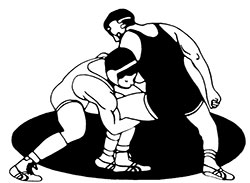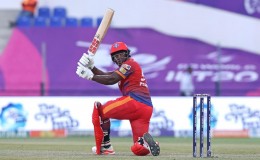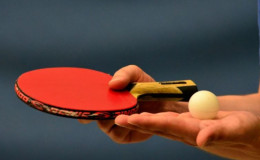
- A sport or contest in which two unarmed individuals struggle hand-to-hand with each attempting to subdue or unbalance the other.
- It is a martial art that uses grappling type techniques such as clinch fighting, throws and takedowns, joint locks, pins and other grappling holds.
International disciplines
Greco-Roman
- In Greco-Roman style, it is forbidden to hold the opponent below the belt, to make trips, and to actively use the legs in the execution of any action.
- Recent rule changes in Greco-Roman increase opportunities for and place greater emphasis on explosive, ''high amplitude'' throws. Pinning one''s opponent to the mat is one way of winning.
Freestyle wrestling
- This style allows the use of the wrestler''s or his opponent''s legs in offense and defense.
- Freestyle wrestling has its origins in catch-as-catch-can wrestling and the prime victory condition in this style involves the wrestler winning by throwing and pinning his opponent on the mat.
Grappling
- Grappling is a wrestling style that consists of controlling the opponent without using striking and also includes the use of submission holds. It is also referred to as "submission grappling.”
- It starts from a standing position or on the ground after a throw, and the goal is to make the opponent submit via the use of immobilization techniques such as locks
Combat grappling
- Combat grappling is a form of safe amateur Mixed Martial Arts (MMA) that incorporates techniques from most existing Martial Arts systems, creating a unique fighting environment that alternatively takes the fight from standing to ground positions.
- Combat grappling matches are either won by grappling holds such as joint locks and chokes, or by striking and kicking techniques.
Beach wrestling
- Beach wrestling is standing wrestling done by wrestlers, male or female, inside a sand-filled circle measuring 6 meters (20 ft) in diameter with only two weight categories, heavy and light.
- The wrestlers wear swimsuits rather than special wrestling uniforms. Wrestlers may also wear spandex or athletic shorts.[13][14]
Sambo
- This is a multi techniques borrowed sports ranging from the two international wrestling styles of Greco-Roman and freestyle to judo, jiu-jitsu, European styles of folk wrestling, and even fencing.
- The rules for sport sambo are similar to those in competitive judo, with a variety of leg locks and defense holds from the various national wrestling styles in the Soviet Union, while not allowing chokeholds.
Folk style disciplines
Folk wrestling styles are not recognized as international styles of wrestling, by FILA.
Collegiate wrestling
- Collegiate wrestling (sometimes known as scholastic wrestling or folk style wrestling) is the commonly used name of wrestling practiced at the college and universitylevel in the United States
Professional wrestling - Professional wrestling refers in practice to "sports entertainment", where matches are ''worked'' to an arranged outcome, as a result of staged combat.
Wrestling Mat Dimensions
Thickness and Material
- FILA-regulated mats must be between 5 and 7 centimeters thick with a core made of high-density, shock-absorbing foam.
- The surface of the mat must be of a non-abrasive vinyl material that can easily be cleaned. This material also helps to prevent slipping and is static electricity proof
Measurements
- Square-shaped mats must be 12 meters by 12 meters.
- Octagonal-shaped mats should have a diameter of 15 meters.
- The action of a freestyle or Greco match takes place inside of the wrestling area, which is typically a yellow circle with a diameter of 7 meters
- At the center of the wrestling area is a “center circle” with a diameter of 1 meter.
- This circle indicates where the action must start.
- The color of this circle is typically red or white, and may be a full-filled circle or include a line of 10 centimeters in thickness.
Passivity and Protection Zones
- The red circle that surrounds the circumference of the wrestling area is known as the “passivity zone.”
- The one meter between the passivity and protection zone is considered to be “in bounds.”
- When the action moves into this area, wrestlers are warned to keep the wrestling in the center of the mat.
- The space outside of the passivity zone is called the “protection zone” and is considered out of bounds.
- In order to ensure that wrestlers are safe if the action continues out of bounds, this space must extend at least one and one-half meters past the passivity zone boundary.
- The two corners diagonally opposite one another on the protection zone are designated as either red or blue. This is done to give each wrestler a representative color.
- Coaches of competitors are typically in or around this corner, and wrestlers return to their respective corners in between the periods of a match.
Platforms - For all Olympic, world and continental championships, the mat must be installed on a stage or platform. This platform must be between .5 and 1.1 meters off the ground, and have additional padding that stretches 2 meters beyond the edge of the platform.
Wrestling Rules
- The object of the sport of wrestling is to put your opponent on his back to pin your opponent.
- A pin (or fall) is when you put your opponent on his/her back with any part of both shoulders or both shoulder blades of your opponent in contact with the mat for two seconds. When you pin your opponent, the match is over and you are the winner.
- If nobody gets pinned, the winner is the wrestler who has scored the most points during the match.
Five ways to score points in a wrestling match:
1) Takedown - (2 points) you score two points for taking your opponent down to the mat and controlling him/her.
2) Escape - (1 point) you score one point for getting away or getting to a neutral position when your opponent has you down on the mat.
3) Reversal. - (2 points) you score two points when your opponent has you down on the mat and you come from underneath and gain control of your opponent
4) Near Fall (Back Points) - (2 or 3 points) you get near fall points when you almost but not quite get your opponent pinned
5) Penalty Points - (1 or 2 points) your opponent is awarded points if you commit the following infractions.
Illegal Holds
Technical Violations
Unnecessary roughness
Unsportsmanlike conduct
Flagrant Misconduct Stalling
Incorrect starting position or false
Major Tournaments
- Summer Olympics
- World Cup
- Commonwealth Games
- Pan-American Games










